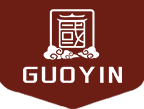10
2025
-
07
China’s Stainless Steel Export Trends and Policy Analysis in 2025: Seizing New Opportunities in International Steel Trade
China dominates global stainless steel exports, with 2025 trends favoring high-end products and diversified markets like BRI nations. Policies focus on tax rebates, green standards, and trade agreements. Challenges include protectionism and carbon tariffs, countered by tech upgrades and localization. The industry shifts toward value-added solutions, ensuring sustainable growth under China’s "dual circulation" strategy.
Author:
Ⅰ.Overview of China’s Stainless Steel Export Status and Policy Environment
As the world’s largest producer and exporter of stainless steel, China plays a pivotal role in global steel trade. In 2023, China’s stainless steel exports exceeded 4 million tons, accounting for over 30% of global trade volume. This achievement stems from decades of technological advancement, production capacity expansion, and strategic government support for the steel industry.
With the deepening of the "dual circulation" development strategy, China’s stainless steel export policies are shifting from quantity-driven to quality-driven, emphasizing high-value-added products and enhancing international competitiveness.
The current export policy framework includes three key aspects: export tax rebates, industry standards, and trade agreements. For tax rebates, the government implements differentiated policies to encourage high-end stainless steel exports. In terms of standards, China is aligning its stainless steel specifications with international norms to improve global recognition. Additionally, through regional trade agreements like RCEP, China is reducing tariff barriers, creating a more favorable environment for stainless steel exports.
These measures collectively support the sustainable growth of China’s stainless steel trade.
Ⅱ. In-Depth Analysis of China’s Stainless Steel Export Trends in 2025
From a product perspective, China’s stainless steel exports will shift toward high-end products by 2025. With increasing R&D investments, the export share of high-value products—such as duplex stainless steel, super austenitic stainless steel, and corrosion-resistant alloys—is expected to exceed 40%. These products are gradually breaking the dominance of European and American manufacturers in premium markets, particularly in emerging sectors like new energy equipment, marine engineering, and advanced chemical processing.
From a regional perspective, China’s stainless steel exports will diversify. Traditional markets in Southeast and East Asia will maintain steady growth, while Belt and Road Initiative (BRI) countries, especially in the Middle East and Africa, will become new growth drivers. In 2023, China’s stainless steel exports to the Middle East surged by over 25%, a trend likely to continue through 2025. Meanwhile, as Chinese products improve in quality, exports to high-end markets like Europe and North America will also increase, leading to a more balanced global distribution.
From a trade perspective, China’s stainless steel exports will emphasize branding and service integration. Leading manufacturers are transitioning from pure product exports to becoming comprehensive solution providers , establishing overseas warehouses, processing centers, and after-sales services. This shift enhances competitiveness while reducing risks from trade disputes.
Ⅲ. Challenges and Strategies for China’s Stainless Steel International Trade
Despite strong prospects, China’s stainless steel exports face challenges. Rising trade protectionism has led to increasing anti-dumping investigations and technical barriers—over 10 trade remedy cases targeted Chinese stainless steel in 2023 alone. Additionally, global green transition policies , such as the EU’s Carbon Border Adjustment Mechanism (CBAM), will raise production and export costs. Competition is also intensifying from emerging producers like India and Southeast Asia.
To address these challenges, China’s stainless steel industry must adopt multi-dimensional strategies:
Strengthen industry self-regulation to avoid price wars triggering trade conflicts.
Increase green technology investments to reduce carbon footprints and comply with international environmental standards.
Expand overseas production partnerships through localized manufacturing.
Leverage digital trade platforms (e.g., cross-border e-commerce) to explore new sales channels.
The Chinese government should refine export policies, engage in international trade negotiations, and foster a fairer competitive environment.
Ⅳ. Conclusion: Seizing New Opportunities in Stainless Steel Exports
By 2025, China’s stainless steel exports will achieve high-quality growth , driven by policy guidance and market demand. As the industry upgrades and global competitiveness strengthens, Chinese stainless steel will occupy a more critical position in the global value chain.
Companies must adapt to policy changes, monitor market trends, and proactively address challenges to sustain export growth. Under the "dual circulation" strategy and BRI, China’s stainless steel exports are poised to reshape international trade dynamics, contributing Chinese expertise to the global steel industry.
Key words:
Related news


